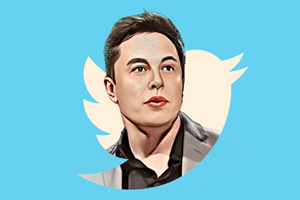What Are Interest Rates?
Welcome back to the third episode of the Ask an Economist series. I’m Sandile from the IMF. And in this series, we tackle your questions about thorny economic issues, breaking them down and giving you straight answers without all that fancy academic speak. Let’s get started.
So over the past year, we’ve seen inflation pick up all over the world. And in response, many central banks have tried bringing inflation back down using a powerful tool called interest rates. Today, we’re going to tackle questions around the theme of interest rates. So, what are they? How do they impact the economy? How do rising interest rates affect inflation?
So, what are interest rates?
Well, interest rates refer to the cost of borrowing money. And they show up everywhere. So whether I’m taking out a student loan or using my credit card for major purchases or applying for a mortgage loan to buy a house. And while there’s many different types of interest rates, the most important tool to move interest rates is the interest rate set by a country’s central bank. Economists call this the policy rate. And as its name suggests, you can think of a central bank as being the “big bank” of normal banks. A central bank’s policy rate determines how much it costs banks to borrow money, which in turn determines what banks charge everyone else to borrow from them. So that brings us to our second question.
How does the central bank’s interest rate impact the economy?
When policy rates are low, the cost of borrowing money is cheap for banks, so they charge households and companies and governments lower interest rates. Now, this is going to have ripple effects throughout the entire economy. Lower interest rates mean a lower cost for borrowing loans or lower payments on existing loans, like variable rate mortgages. This drives up spending; it drives up investment; it drives up demand. And as a result, you can have an increase in overall economic activity.
Now, sometimes the balance between the supply and demand of goods and services in the economy can go off track, like we’ve seen over the last year. Supply shortages of everything ranging from cars to semiconductors to delivery workers clashed with really high demand. And that meant there was too much demand chasing too little supply, and that drove up prices.
Now, central banks can’t do very much about there being too little supply in the short term, but by changing the policy rate, they can have a major impact on demand. So that brings us to our third question.
How do rising interest rates affect inflation?
The higher cost of borrowing lowers demand by discouraging people from taking out loans or spending on their credit cards. On the flipside, interest rates for saving accounts also increase, and so that makes saving more attractive. For businesses, lower consumer spending often means less profit, and they too are facing higher borrowing costs. So as a result, you might see them push off investment or have to cut production, and that can lead to higher unemployment. Higher interest rates can also affect government spending plans, too, as their financing costs rise. And so all together, all of these different pieces lead to lower demand and they help reduce inflation.
Now, you might be wondering, if increasing interest rates to tackle inflation causes all of this economic pain, why would we do it?
So in the face of rising inflation, higher interest rates are often a necessary pain. Inflation is the worst tax on the poor, and if it isn’t dealt with quickly, it can lead to even higher costs of living that further increase hardship, hurt consumer confidence and, over time, decrease trust in policymakers’ ability to bring inflation back down to manageable levels. Now, if policymakers do lose the trust of the public, households and businesses can start to assume that maybe prices will continue increasing at an elevated pace and workers will demand higher wages to keep pace with that inflation. In turn, those higher wages can lead to more demand pressure and a further spiraling up of prices.
The trick here is for central banks to find the “goldilocks” level of interest rates, in between too low and too high, that brings inflation back under control without putting too much strain on an economy.
So that’s all we have time for today. Please continue to send your questions to AskanEconomist@IMF.org, and we’ll see you next time.















